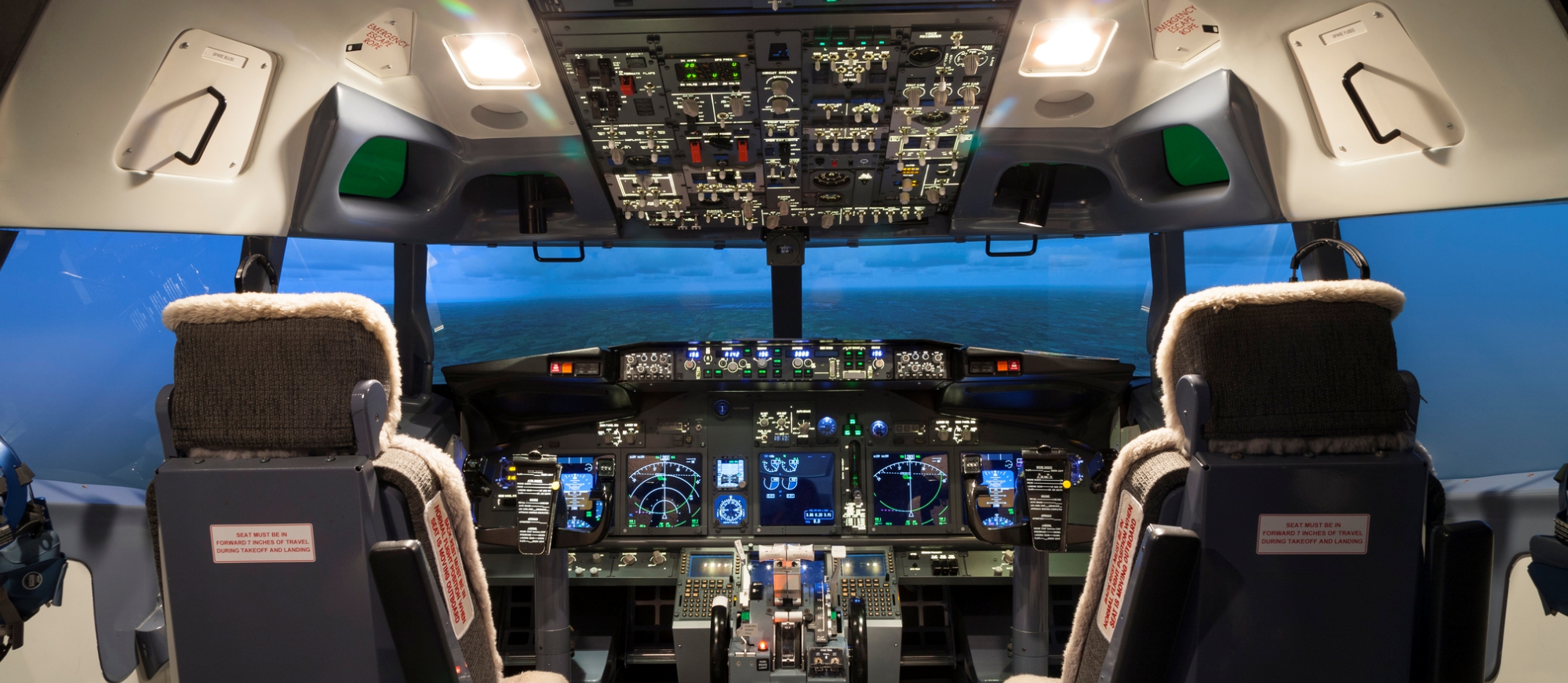The Time In Course Syndrome
September 13, 2019

This blog started as a primer for HTML 5, at least, in the earliest stages of its inception, but when I sat down to write it, I realized there was something else I needed to address, first. After hearing some variation of the same question/statement twice in a single week, I knew we needed to talk time in course before we dove back into the coding conversation.
In one instance, one of our customers asked me if there was a way to force a student to spend a certain amount of time in an online airline systems course.
In another instance, we had a student in one of our ATO customers telling us that he needed to spend 56 hours in the course in order to count it as credit.
Why all this hullabaloo about the amount of time a student spends in a course?
My exposure to airline training started when I got hired by Northwest Airlines back in January of 1988. During those days we went to Minneapolis for training, so we got to spend days on end in the classroom learning about aircraft systems, company procedures, general subjects, etc…
The routine for the classroom presentation mode was as follows: At the start of the day, we would show up at the designated classroom and sign in on a sheet. Then the lecture would start and go on for 50 minutes, followed by a 10-minute break. Even if you only needed 15 minutes to cover the material. One of the nice things about classroom presentations is that you can actually interact with the instructor, so if someone didn’t understand something, he/she could ask one or more questions. For those that “got it,” it was reinforcement, and for those who “didn’t get it,” it was an additional opportunity to understand.
This would go on until the last class, at which point we were released for the rest of the day. Since the schedule usually covered 4 hours, the instructor would turn in the sign-in sheet to the training department and log 4 hours of training for the whole group. This continued until all the subjects had been covered in the classroom. Since the training was pre-planned, we obviously all had the minimum number of hours specified for the ground school portion of our training.
Of course, there’s a difference between theory and practice. There were often times when we didn’t have enough material for the time allotted – in other words, we had 50 minutes to cover 15 minutes worth of material. What happened really depended on the instructor in the classroom. Some would start covering the material reserved for the next period; some would let us take a longer break; and some would use the rest of the period for something else such as discussions about ongoing rumors, recent news, etc. And for those instructors that would “skip” ahead on the modules, they would let us out early when all the material for the day was covered. So, if 4 hours were scheduled to cover 4 topics, but we did it in 2 hours, the instructor would let us out 2 hours early – a real and rare treat. The bottom line, though, is that the scheduled time was not being used for the intended purpose. At the end of the day though, the instructor turned in the sign-in sheet and logged 4 hours for everyone anyway.
During the annual refresher, less time was devoted to covering material since we were supposed to know it already. The time was supposed to be spent on brushing up on information, but in reality, the students really weren’t “into it.” Usually, the classroom paid attention to the system refreshers since these systems are more complicated and your knowledge about these systems frays over time. The general subject refresher was quite different, though. I spent about 10 years on the DC10, both as a flight engineer and a copilot. I was based in Detroit as a copilot, so I crossed the Atlantic approximately 8 to 10 times a month, and needless to say, I knew the NAT Track procedures by heart. Of course, during the annual refresher, we all got to sit in on a one hour lecture covering the NAT Track procedures, but since we all knew them by heart, we weren’t really “into it” and you could look around the classroom and see what people were doing. I saw some people with blank stares on their faces, some dozing off, some reading the newspaper or a book, some writing something down, etc., but I didn’t see a lot of people paying attention. I felt embarrassed for the instructor who was trying to do his job because I knew that he could see the same thing. Was the time in the course worth anything? Not if you ask me.
The bottom line is that the training emphasized knowledge, but the set up insisted on a minimum number of hours. I didn’t really matter if that amount of time was really necessary.
Nowadays, training is mainly delivered via the internet. The concept behind eLearning is self-paced. So, if student A needs 1 hour, but student B needs 3 hours, that’s OK The objective is to pass the end of module assessment. Time became irrelevant, but not for everyone.
Usually, the training for an airline or ATO is overseen by an inspector of the FAA, Transport Canada, or whatever Civil Aviation Authority in the organization’s jurisdiction. This training footprint is documented and specifies what needs to be covered, and how much time is supposed to be spent doing that training.
When eLearning became in vogue, the time component started to become blurry. My experience is that with the larger organizations, the time component is no longer emphasized, but with the smaller ones, the emphasis is still there. But there’s a huge problem with this.
In a classroom, a student is a hostage to the instructor, so the student really can’t go anywhere without the instructor’s permission. But with eLearning, the student is not a hostage.
One comment I hear all the time from customers is that they want to make sure the student is studying, and to enforce that, the customer requires that the student clicks on a button on the screen to advance in the course. Avsoft’s course interface has a neat feature that the students really appreciate – it’s called the movie mode. Basically, when the movie mode is turned on, the interface will automatically advance the screen when the audio is done playing, or if there is a video on the screen when the video is done playing. This will continue on until you reach the end of the module, at which point, the interface will ask you if you’re ready to take the end of module assessment.
The reason that students appreciate the movie mode is that it makes it a more pleasant learning environment. Most people prefer watching a video over reading something on screen.
Of course, there’s nothing that prevents someone from clicking on the movie mode, and walking away from the computer, so the usual directive we receive is to turn off the movie mode. In effect, this forces the student to click on the next button to advance through the course. Theoretically, the student can’t walk away from the computer. In practice, however, that isn’t true, either.
There’s free software on the internet that can be easily downloaded and installed on your computer that programs your mouse to repeatedly and automatically click on a certain spot on the screen. Basically, after installing it and teaching it where to click you can launch the module, run the program, and walk away.
There are ways to deal with this problem. The way we deal with it at Avsoft is to inject interactivity in the course. For example, we may ask the student to click on a particular switch in order to do something. Sometimes that something is simply advancing to the next screen; other times, it does something else. For aircrafts with glass cockpits, there’s usually a control that you can use to change the range on the ND. Usually, a repeated push of the switch will decrease the range until it recycles back to the highest range, and we’re able to mimic this in our courses. In these types of scenarios, the next button is not enabled until that hot spot is clicked at least once. The bottom line is that since these hot spots are in random locations of the screen, the “cheat” software is not able to click on the correct spot since it doesn’t know where that spot is. When we start working with a new customer, we usually get at least one student who tells us that there’s a problem with such and such module because they can’t advance to the next screen. Invariably, it’s because there’s a hot spot on the screen that’s not being clicked and that’s what we point out when we reply to this “tech support” issue. And of course, we copy the Director of Training on the response and magically, that’s the last complaint we ever get from that organization on that topic!
Our course interface has another feature that tries to deal with this “walk away” behavior. It’s called the “Time Out” feature. Basically, if the mouse doesn’t move for a set period of time, the module will automatically close itself.
Going back to the Time in Course issue, the eLearning concept and the “traditional” concept are at odds with each other – as I mentioned, eLearning is all about self-paced, but the classroom isn’t, so how does an eLearning provider deal with the Time In Course syndrome? Unfortunately, there’s no standardized way to handle this, so it’s pretty much up to the course vendor to come up with a solution. This usually involves time-consuming and complicated programming changes to the interface, and the real question boils down to whether the vendor wants to invest the time into making changes that a) are really irrelevant to eLearning and b) apply only to small organizations that require a minimum time in course. Of course, the smaller organizations that insist on sticking with the time in course concept don’t have the resources to pay for the programming changes. Nevertheless, Avsoft deals with a lot of organizations that range from the very small to the largest, so we’ve obviously decided to build this feature in.
At the start of this blog, I wrote the following question: What is the source of these requests?
I think the answer to that question is that the powers that dictate the training footprint think that eLearning is a replacement for the classroom training – it’s just designed to save money on transportation, hotel, and per diem costs.
Classroom and eLearning training have the same objective – to transfer knowledge.
Yes, it’s true that eLearning saves on some costs. But eLearning and classroom training are very different in one respect: there are no hostages with eLearning. In my opinion, being a hostage in a classroom can be counter-productive – how much learning will you do when you’re irritated because you could be something else with your time besides spending time on something you already “got?”

